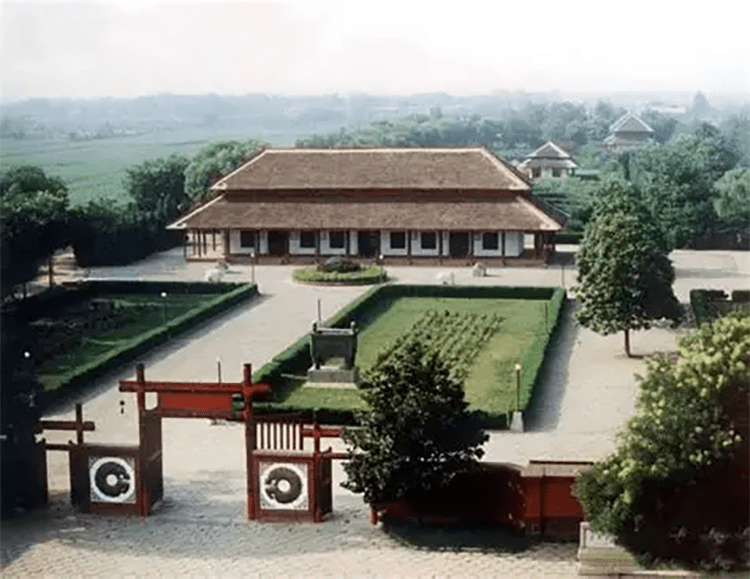Discover Shang Dynasty Secrets at Yinxu Museum
Introduction:
When your fingertips lightly brush a display case and the taotie patterns on bronze whisper, or the grooves of oracle bones suddenly seem alive, you realize this is not an ordinary museum but a time tunnel. The Yinxu Museum, a modern hall standing on the Huan River bank, lets you confront the Shang — the first Chinese dynasty recorded in writing. Each artifact here is a key to decoding a three-thousand-year-old theocratic society, and with every pause you can almost hear the myth of the Mandate and the mystical bird stirring from the soil.
1. World Heritage Temple of Shang Civilization
As China’s only world-class museum built around a Shang-period site, Yinxu Museum is itself part of history. It sits directly within the preserved palace and ancestral temple area of the Yinxu ruins, creating a striking “museum-and-tomb-as-one” experience where artifacts remain close to their original unearthed locations. In 2006 UNESCO added Yinxu to the World Heritage List, citing its demonstration of the “apogee of early Chinese writing, bronze culture, and urban planning.” The building’s exterior draws inspiration from Shang-era thatched terraces: sloping rammed-earth walls are inlaid with bronze panels shaped like oracle bone inscriptions. When sunlight filters through those ancient characters and casts shadows across the ground, visitors step literally into the past.
2. Signature Treasures: Bronze Oracles and Oracle Bones
• Simuwu Ding (Si Mu Wu Tripod): Weighing 832.1 kg, this colossal bronze ding is often hailed as China’s premier ritual cauldron. The three-character inscription “Si Mu Wu” on the interior wall identifies it as a sacrificial vessel for the royal ancestor Mu Wu. Inspect the handles and the fierce tiger motifs and you’ll sense the Shang rulers’ intense devotion to divine authority.
• Fuhao Owl Zun: Discovered in the tomb of Fuhao, China’s earliest recorded female general, this owl-shaped wine vessel, covered with thunder and feather patterns, challenges assumptions about women’s roles in Shang society. Its proud, upright form radiates power.
• YH127 Oracle Bone Pit: A multimedia projection recreates the 1936 discovery of 17,096 oracle bone pieces — effectively China’s earliest archives. Some inscriptions record lunar eclipses roughly 300 years earlier than comparable Babylonian records.

3. Exhibition Narrative: From Objects to a Civilization Map
The museum uses a threefold narrative of “site + artifacts + technology.” The ground floor offers an AR reconstruction of the Yinxu capital layout. The second floor groups bronzes, jades, and pottery to illustrate the Shang people’s ritual life and their reverence for spirits. The third floor focuses on oracle bones with interactive screens showing the full process of pyro-osteomancy — heating turtle plastrons or ox scapulae and reading the cracks for divination. Don’t miss the Oracle Bone Corridor: over 300 selected bone fragments are organized by theme — celestial phenomena, warfare, fertility, and hunting — and a nearby electronic lexicon converts inscriptions into modern Chinese characters. Seeing the character for “pregnancy” rendered as a figure with a swollen belly reveals the ancients’ astonishing observational acuity.
4. Deep-Visit Practical Guide
Best timelines:
• Quick route (1.5 hours): site sand table → Simuwu Ding → Fuhao hall → Oracle Bone Corridor
• In-depth route (4 hours): add the jade workshop reconstruction, bronze-casting VR, and AR trial of Shang attire
Hidden highlights: The basement “archaeological site” area displays 1930s excavation photos, tools, and Liang Siyong’s handwritten notes — a rare archival touch.
When to visit: Avoid weekend school groups in the morning. Afternoon light is best for bronze details.
5. Visitor Essentials
• Transport: From Anyang East Station take Bus 11 to “Yinxu Station,” or a taxi takes about 20 minutes (approx. ¥25).
• Opening hours: Peak season 08:30–17:30 (Mar–Oct); off season 08:30–17:00. Closed Mondays (except public holidays).
• Tickets: ¥70 includes site access. International credit cards accepted, but Alipay QR purchases are recommended.
• Services: English audio guide ¥40 each; bilingual guided talks at 10:00 and 14:00 daily.
• Photography: Flash is prohibited in the bronze galleries; non-commercial photography is allowed in the oracle bone area.

Conclusion:
When the late afternoon sun gilds the museum’s rammed-earth walls, you’ll understand why modern scholars call Yinxu a cradle of Central Plain culture. The museum preserves not only artifacts but the original strokes of Chinese characters and the earliest forms of ritual music and ceremony. Combine Yinxu with nearby Yuanlin and Wenfeng Tower for an “Anyang cultural day tour” and cap the visit with a playful bronze-inspired ice cream shaped like the oracle-bone character for “fish” — a tasteful, modern echo of three thousand years of civilization.


